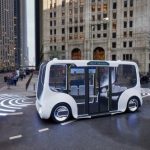 Misconceptions
Misconceptions  Misconceptions
Misconceptions  Mysteries
Mysteries 10 Strange Unexplained Mysteries of 2025
 Miscellaneous
Miscellaneous 10 of History’s Most Bell-Ringing Finishing Moves
 History
History 10 Great Escapes That Ended Right Back in Captivity
 Weird Stuff
Weird Stuff 10 Fascinating Things You Might Not Know About Spiders
 Food
Food 10 Everyday Foods You Didn’t Know Were Invented by the U.S. Military
 History
History 10 Odd Things Colonial Americans Kept at Home
 Weird Stuff
Weird Stuff 10 Superstitious Beliefs That Once Consumed Entire Cultures
 History
History 10 Bizarre Friendly Fire Incidents in Military History
 Technology
Technology 10 Modern Technologies That Accidentally Imitate Ancient Magic
 Misconceptions
Misconceptions 10 Common Misconceptions About the Victorian Era
 Mysteries
Mysteries 10 Strange Unexplained Mysteries of 2025
 Miscellaneous
Miscellaneous 10 of History’s Most Bell-Ringing Finishing Moves
Who's Behind Listverse?

Jamie Frater
Head Editor
Jamie founded Listverse due to an insatiable desire to share fascinating, obscure, and bizarre facts. He has been a guest speaker on numerous national radio and television stations and is a five time published author.
More About Us History
History 10 Great Escapes That Ended Right Back in Captivity
 Weird Stuff
Weird Stuff 10 Fascinating Things You Might Not Know About Spiders
 Food
Food 10 Everyday Foods You Didn’t Know Were Invented by the U.S. Military
 History
History 10 Odd Things Colonial Americans Kept at Home
 Weird Stuff
Weird Stuff 10 Superstitious Beliefs That Once Consumed Entire Cultures
 History
History 10 Bizarre Friendly Fire Incidents in Military History
 Technology
Technology 10 Modern Technologies That Accidentally Imitate Ancient Magic
10 Amazing Technologies That Used to Be Awfully Inefficient
People today link the word “technology” with electricity, but most dictionaries say it is the practical use of scientific knowledge. That means a flushing toilet, which uses hydrodynamics, is a technology. So are many more things that modern people take for granted. They seem so simple compared to today’s cutting-edge devices that it is easy to assume they came into being in their modern forms. But in truth, their first designs were often laughably inefficient. Here are 10 real examples.
Related: 10 Inventions That Thrived in Ways Their Creators Never Expected
10 The Flush Toilet
Water has been used to remove human waste for 5,000 years or more. However, rather than flushing it away on demand, early toilets in places like ancient Rome were built over flowing streams of water. The first flushable toilet to resemble what is used today was designed in 1596 by Sir John Harington of England. He built one for Queen Elizabeth I, but his idea did not catch on at the time. It is easy to see why.
Like modern ones, Harington’s toilet used water from a cistern to flush away what was in the bowl. The problem was that a whopping 7.5 gallons (28.4 liters) of water were needed, and the lack of indoor plumbing meant that the cistern would have to be refilled by hand after each flush. Fortunately, Harington had a solution to the large water requirement: letting as many as 20 people use the toilet between flushes.[1]
9 Cars
While electric cars are now gaining popularity, most cars around the world are still powered by gas or diesel. The ubiquity of internal combustion engines makes it seem like alternatives, such as electric batteries, are a new thing. However, gas was neither the first nor the only viable way to power a car. It was just the most convenient.
At the start of the 20th century, steam cars were a not-uncommon alternative to gas-powered vehicles. Celebrities like Howard Hughes drove one. Steam engines had also been around for longer, and they were safer, more reliable, and less polluting than their internal combustion counterparts. They were fast, too, but they also had some serious drawbacks. It could take up to 30 minutes to get going, and some early models could only travel 20 miles (32.2 km) or so before they needed refilling.[2]
8 Vacuum Cleaners
Transitioning from horse-drawn to electric-powered transport is proving to take some time, but another technology that has already made the shift is the vacuum cleaner. Its first iteration, patented in 1901 by the British engineer Hubert Cecil Booth, was a huge red machine that had to be pulled by horses. Inconvenient as this may have been, it was good for marketing. Booth’s invention drew crowds who watched him clean. Within a year, he was cleaning carpets for the king.
Booth got the idea of sucking dust out of carpets after watching another device that did the opposite. The “mechanical aspirator” blew dirt out of the fibres and into a bag. Its inventor told Booth that sucking it out was impossible, so Booth tried to prove him wrong. Eventually, rich people began having vacuums like Booth’s installed at home, before the US inventor James Spangler came up with the portable electric vacuum cleaner a few years later.[3]
7 Aspirin
Medicines also use scientific knowledge to solve practical problems like pain relief, and they are part of what the WHO calls health technologies. Clearly, many early attempts at medicine were not just inefficient but either did not work at all or were downright deadly. But some seemed to have good ideas behind them. Willow bark and leaves, for example, have been used for medicinal purposes for thousands of years. They contain salicin, which helped later scientists invent aspirin.
This has led to the belief that ancient people noticed the link between the willow and pain relief, but that connection may not have been as straightforward as it seems. Bitter tannins in the tree would have made getting a pain-relieving dose of salicin from just willow-derived remedies deeply unpleasant. These would have given people serious stomach pains. Only in the late 19th century would scientists learn how to modify a related chemical, salicylic acid, to efficiently produce a pain reliever.[4]
6 Firearms
All throughout history, some people have invented new technologies to reduce harm and suffering, while others have dreamed up ways to inflict it. It could be argued that humanity has gotten a bit too good at the latter, and that things were better back in the days when each time someone wanted to fire a gun, they had to light a tiny piece of rope and wait for it to reach the gunpowder in the barrel before it would shoot.
These were known as matchlock muskets, and they were used by early colonists in America. By the time of the Revolutionary War, flintlock mechanisms could set gunpowder alight in an instant. However, muskets were still loaded down the barrel. Weapons with smooth barrels could be loaded and fired about three times a minute by trained soldiers. American long rifles had grooves in the barrel to spin the musket ball. They were more accurate but slower to load, firing about once a minute.[5]
5 Cameras
Another invention that could only shoot very slowly in the past was the camera. Some of the earliest cameras took as many as 20 minutes to capture an image, but this had been reduced to around 20 seconds by the 1840s. That is still a long time to hold a smile, which is why the subjects of 19th-century photographs tend to look very serious. Children were sometimes restrained to stop them from moving and spoiling the image.
Long exposure times were not the only problem with old cameras, either. They were also very large, and photographers working away from their studio had to bring a makeshift darkroom with them. All the equipment had to be hauled around in horse-drawn wagons. Developing the images was dangerous too. The process required photographers to handle toxic chemicals like mercury.[6]
4 Watches
There are some items people still like to make the old-fashioned way. Analog watches, for example, remain a hallmark of luxury despite the many capabilities of modern digital ones. However, they would not be able to command such substantial sums of money if they were too old-fashioned. An early type of watch dating from the 1580s, known as a Nuremberg Egg, perfectly demonstrates why.
For a start, Nuremberg eggs were far too bulky to be worn on the wrist. Instead, they were carried in pockets or worn around the neck. They also only showed an hour hand, because the crude spring mechanism that powered them was not accurate enough to track minutes. Even then, their reliability varied depending on whether they were laid flat or being carried. The hand also moved slower when the spring needed rewinding.[7]
3 Computers
Most of the technologies on this list took hundreds of years to reach the forms they are found in today, but computers have improved drastically over a short span of time in comparison. Just look at ENIAC, the first programmable general-purpose computer. It was built to help solve equations so that the military could predict the flight paths of artillery shells, but in 1946, it needed 1,800 square feet of room to do it.
The 30-ton machine could perform tasks beyond its original purpose, however. Scientists and engineers working with ENIAC at the University of Pennsylvania could rewire the plugboard to give it new problems to work on. It was incredibly fast for its day and could perform up to 5,000 additions per second, but there was one problem. It was so complex that rewiring the plugboard could take days.[8]
2 Game Consoles
Gamers today expect new titles to have 3D graphics and to give them whole new worlds to explore. However, the earliest home video games were so basic that people had to stick a plastic overlay onto their TV screen just to play them in color. This was actually quite a clever solution, as static electricity would hold the plastic in place so that it could be easily removed when finished.
This was how games were played in 1972, when the German-American engineer Ralph Baer released the first game console designed for use at home. Called the Magnavox Odyssey, it allowed people to play simple tennis and shooting games at home. Two controllers were included so that people could play each other, but the console had no way to keep track of the score, meaning the players had to do it themselves. [9]
1 Phones
For many people, smartphones will be the first things that come to mind when they hear the word “technology.” Modern ones are so advanced that they combine several of the examples on this list, including cameras, game consoles, and computers, and they allow people to contact others in mere seconds. Where the other person is located in the world hardly even matters. However, telephone technology has come a long way to get here.
Most people know that old telephone calls used to be routed through wires and switchboards, sometimes with an operator manually connecting the wires through a switchboard. But how long did this process take in the early days? For a long-distance call in 1918, it was about 15 minutes—a far cry from the instant connection people take for granted today. Still, it was a step up from the telegraph, which needed specialist operators to interpret messages.[10]








